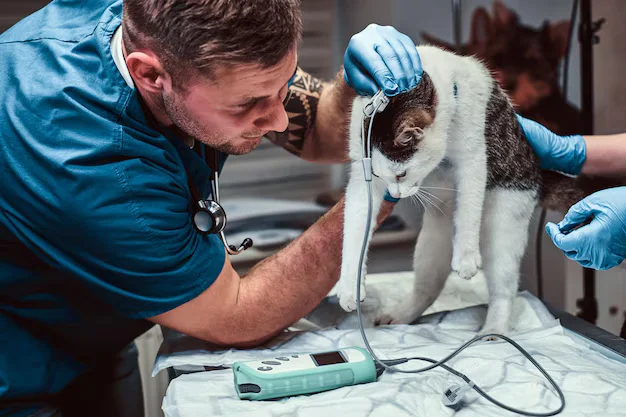Pets are experts at hiding pain. Many owners assume a little limp, hesitation before jumping, or random skipped steps are nothing significant. These little abnormalities, however, can indicate major orthopaedic disorders that, left ignored, will get worse with time.
Early knowledge of these diseases allows efficient treatment, reducing pain and avoiding long-term harm. These are some of the most often occurring but neglected orthopaedic problems in animals; therefore, a competent orthopaedic veterinarian working in a professional veterinary clinic can be of great support.
1. Luxating Patella
If you’ve seen your dog hopping on three legs for a few steps before returning to normal walking, they may have a luxating patella, a kneecap that slips out of position. This ailment appears most in small dogs, such as Chihuahuas, Yorkies, and Pomeranians, although it can also afflict larger breeds and even cats.
Signs to Watch For
- Sudden skipping or hopping on the back legs
- Kicking out the leg mid-walk as if to reset the knee
- Periodic lameness that seems to get better
Luxating patellas are classified by severity, ranging from moderate cases causing short-term discomfort to more serious cases that need surgery. If untreated, they can lead to arthritis and joint issues.
2. Cranial Cruciate Ligament Tears
Dogs that suddenly limp on a back limb after an intensive activity might have a torn cranial cruciate ligament (CCL) comparable to an ACL injury in people. While some dogs experience a severe tear after an injury, many develop recurrent problems from slow wear and strain, especially in obese or energetic dogs.
Early Symptoms
- Sudden or occasional limping that comes and goes
- Trouble standing up or reluctance to jump
- Swelling around the knees
A CCL tear doesn’t heal by itself and often worsens slowly, putting tension on the other knee. Surgical intervention by a qualified orthopaedic veterinarian is usually the best option.
3. Hip Dysplasia
Though this developmental disorder begins in puppyhood, many pet owners link hip dysplasia with ageing. It results from improper hip joint formation that causes instability, discomfort, and, finally, arthritis.
Early Signs in Young Dogs
- A bunny-hopping gait (hopping with both back legs instead of using a normal stride)
- Hesitation before jumping onto furniture or into the car
- Wobbly or swaying movements in the back legs
Large breeds are more vulnerable to hip dysplasia, but smaller dogs and mixed breeds aren’t immune. Early intervention, weight management, and targeted treatments can slow disease progression and preserve mobility.
4. Elbow Dysplasia
Most people don’t suspect elbow dysplasia unless their dog is from a high-risk breed. But this disorder, which happens due to abnormal elbow joint development, can affect dogs of all shapes and sizes.
Symptoms That Are Overlooked
- A persistent limp in the front leg
- Stiffness after rest, which improves with movement
- Avoiding placing full weight on one paw
Some dogs don’t display obvious lameness until they are older since elbow dysplasia begins in puppyhood and advances over time. Early X-ray and diagnosis helps control symptoms before arthritis strikes.
5. Osteoarthritis in Cats
Cats are experts at masking discomfort, and many owners confuse arthritis with normal aging. Studies reveal that over 90% of older cats have some kind of arthritis; most cases go unreported.
Signs of Feline Arthritis
- Hesitation or avoiding jumps to high places
- A once-playful cat becoming less active
- Stiffness, especially after sleeping
- Litter box avoidance due to painful movement
Unlike dogs, cats rarely limp when they have arthritis, making it even harder to detect. However, proper veterinary care—including pain management, joint supplements, and environmental modifications—can dramatically improve quality of life.
Why Early Diagnosis Matters
Cats with arthritis seldom limp, unlike dogs, which makes diagnosis much more difficult. Still, good orthopaedic veterinarian treatment—including environmental changes, joint supplements, and pain management—can greatly raise the quality of life.
How an Expert Veterinary Team Can Help
- Proper diagnosis using CT scans, X-rays, or physical exams
- Individualized treatment programs, including weight control, therapy, and surgery
- Advanced painkillers, including rehabilitative strategies
Your pet relies on you, and if something appears off—even if it’s only a small limp or change in movement—it’s worth taking to a professional veterinary clinic.







